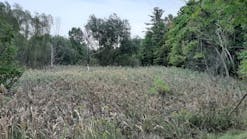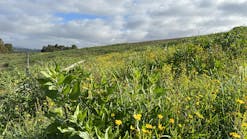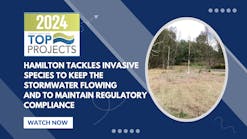Poles planted into a longitudinal peaked stone toe protection keyway.Pole planting areas might need to be accessible to heavy equipment, as the poles should be planted into deep holes. Pole planting techniques might require the use of a power auger, a large metal punch bar mounted on a backhoe or hydraulic excavator, or some other method to excavate deep holes. The location of the water table (saturated zone) and vadose zone (moist soil zone including the capillary fringe, located above the saturated zone) should be approximately identified so the pole plantings can access sufficient moisture. Pole planting techniques implemented after construction is complete – for instance, after riprap placement – is very difficult. Pole plantings should ideally be installed during the construction of any large structures. MaterialsWhen planting poles, use relatively long, large-diameter cuttings, about 5-10 ft. long, taken from willow (Salix spp.) or cottonwood (Populus spp.). Larger-diameter cuttings have a greater supply of stored energy. The technique works well with nonirrigated projects because the deep planting can ensure contact of the basal ends of the poles with the vadose zone during hot, dry summer months. A pond or storage area for soaking the cuttings will be necessary. The harvested cuttings (ideally during the dormant season) need to be soaked for five to 10 days. Poles have been successfully established after 30 days of soaking. Plant poles into an augered, “punched,” or excavated hole. The holes should extend to approximately 1 ft. above the water table and through the vadose zone. In the case of widely fluctuating season water levels, ensure that the ends of the poles reach the low water line at the time of plantings. Plant the poles during riprap placement such that the poles extend through the riprap and backfill and into contact with the “native” bank. Poles can be planted into trenches excavated for keyways or scour trenches. The backfill can be placed over and around the poles rather than having to punch holes through the riprap. The pole plantings, especially the basal ends, must have good contact with the soil. “Mudding” (filling the hole with water and then adding soil to make a mud slurry) can remove air pockets.





